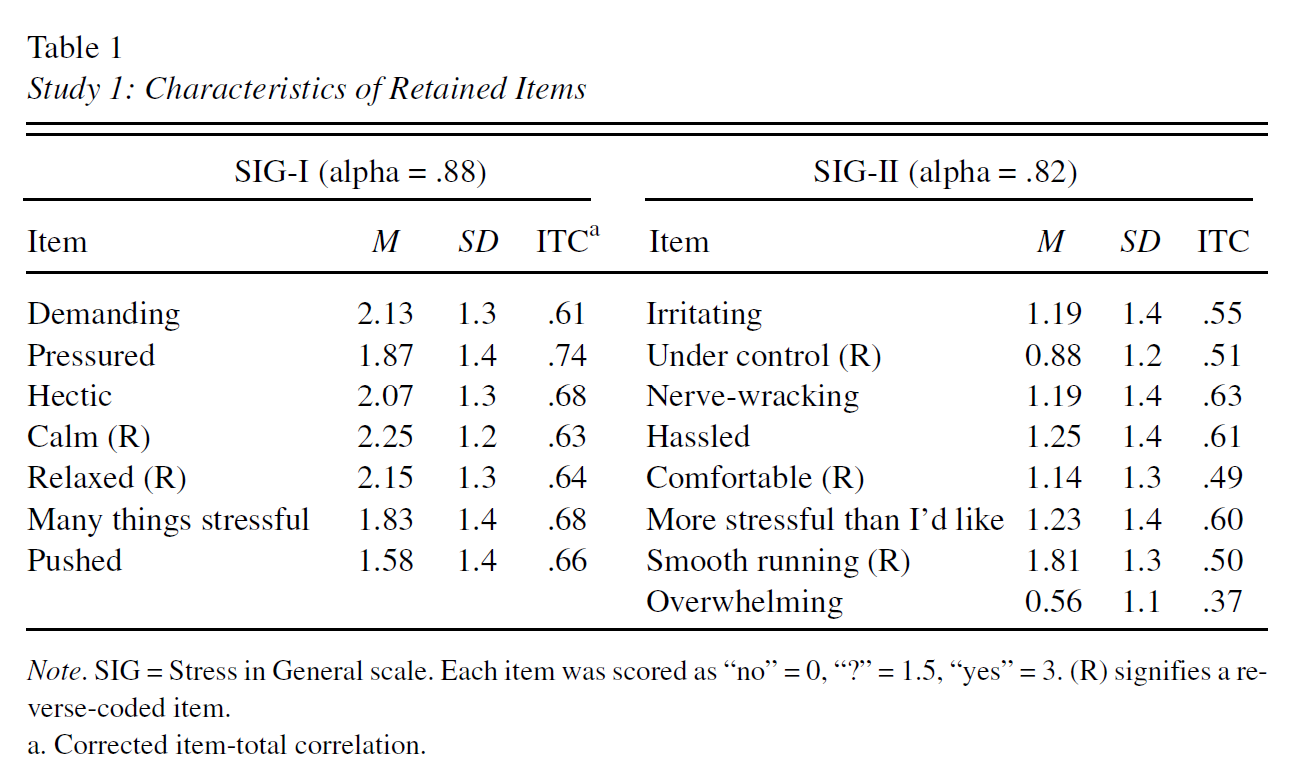Stanton 2001 - A General Measure of Work Stress - The Stress in General Scale
Stanton, J. M., Balzer, W. K., Smith, P. C., Parra, L. F., & Ironson, G. (2001). A general measure of work stress: The stress in general scale. Educational and Psychological Measurement, 61(5), 866-888.
Summary
Quoting Lazarus and Folkman (1984), stress is defined as ““a particular relationship between the person and the environment that is appraised by the person as taxing or exceeding his or her resources and endangering his or her well-being.” The authors analyze existing measures of stress, which are either self-reports, behavioral measures, or medical/biological measures. The shortcomings of each are considered, and validation goals are set forth. They are “(a) development of a measure of stress distinct from dissatisfaction that could serve as (b) a general job stress measure that is (c) widely applicable across varied settings and examinees.” These goals seem especially applicable to future scale generation attempts that seek a more holistic or general view of a construct. In other words, construct type scales should be 1) distinct, 2) general (not highly specific with regards to a single construct facet), and 3) widely applicable.
There were several assorted bits of wisdom that I gleaned from this article. They cited research that showed that dichotomous or trichotomous responses can work as well multiple choice response formats in many cases. This is particularly useful because it would cut down on the effort (and time) needed from a subject filling out a measure. They were very specific about starting with an overly large pool of items. They did this both by using a thesaurus and also by engaging in exploratory qualitative interviews. They used “descriptive statistics and item-total correlations” to reduce their list (though I would’ve liked a bit more description on this process). They provided worst-case evidence against their scale, commingling its items with the items of a possibly related measure (“a deliberate challenge to the discriminant validity of our stress measure scores”). They detailed a process in which they conducted analysis with various item scorings (varying the value of a “?” response). I learned that a zero-order correlation is simply a correlation in which nothing is “controlled” for, making it essentially a normal Pearson correlation. Also, they put the Cronbach’s alpha in the diagonal instead of 1. This was just a small detail, but it makes sense. They evaluated the “readability” of their measure two different ways (one via a program and then also by comparing responses from people with differing levels of education). I learned that a modification indice is the same thing as a LaGrange Multiplier (and that it essentially measures how much better a model fits if a parameter is added).
Results of exploratory factor analysis (and confirmatory factor analysis) show two factors emerging, which are called “Pressure” and “Threat.” Each has a corresponding subscale. They thoroughly explain why their two-factor measure is superior to a single-factor measure.
Applicability
The relationship between them is not linear, but rather curvilinear, implying that, as pressure increases linearly, perceived threat rises with a constantly increasing rate. This means that at a certain point, a small increase in pressure can result in a very large increase in perceived threat. It does seem to give credence to the idea of a single straw breaking a camel’s back. Aside from that, this paper could serve as a very complete template for future scale generation.
